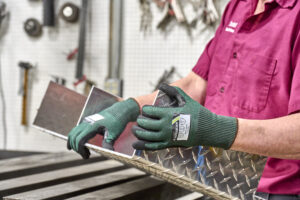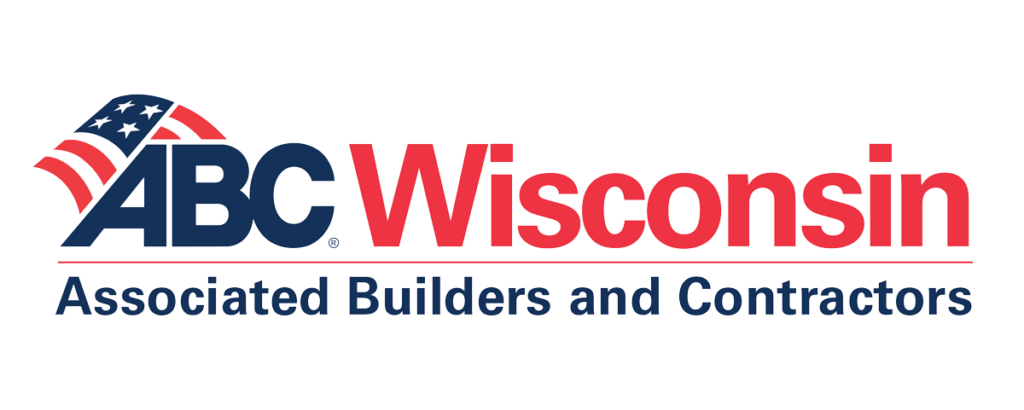By J.J. Keller and Associates
Did you know that cut-resistant gloves aren’t as cut-proof as many believe? While they play a crucial role in protecting construction workers from cuts, abrasions, and punctures when handling sharp tools and materials, there are a number of misconceptions about these gloves that employers might not fully understand.
From the idea that higher cut resistance always means better protection, to the belief that these gloves eliminate the need for other safety measures, it’s important to separate fact from fiction. We’ll clear up common myths and offer guidance on effectively selecting and using cut-resistant gloves to keep your workers safe.
 Myth: Cut-resistant gloves are cut-proof.
Myth: Cut-resistant gloves are cut-proof.
A common myth surrounding cut-resistant gloves is the belief that they are cut-proof. This leads to the assumption that construction workers will be fully protected from cuts once they wear these gloves. In reality, no glove is completely cut proof. Cut-resistant gloves are designed to reduce the risk of cuts significantly but cannot eliminate them.
The level of cut protection a glove offers depends on its material and its rating on various safety standards. For example, gloves rated at Level 5 offer more protection than lower-rated gloves, but sharp tools and materials can still pierce the material under certain conditions. Employers should ensure that workers understand that these gloves reduce the likelihood of injury but do not guarantee absolute protection.
Myth: Higher cut-level protection is always better.
Many employers mistakenly assume that the higher the cut-resistance level, the better the glove. While it’s true that gloves with higher cut-resistance ratings, such as Level 5, provide superior protection, these gloves tend to be thicker and less flexible, which can limit dexterity. Workers who need precision or the ability to handle delicate materials may find high-resistance gloves too bulky for effective use.
Employers should select gloves based on the specific tasks workers will be performing. Higher resistance levels may be proper for jobs involving sharp tools and materials where dexterity is less important. However, gloves with moderate cut-resistance ratings may provide the ideal balance of protection and flexibility for tasks requiring intricate movement or fine motor skills.
Myth: The palm area offers the most protection.
A common belief is that the palm of the glove offers the greatest level of cut protection. While the palm area absorbs significant impact and protects from cuts, employers must remember that other parts of the glove—such as the fingers, wrist, and back of the hand—should also be well-protected. Injuries can occur in any area of the hand, not just the palm.
It is important to choose gloves that offer uniform protection across the entire hand. Ensuring that the entire glove, not just the palm, is designed for cut resistance will help prevent injuries from sharp tools and materials that could affect any part of the hand.
Myth: One size fits all.
A common misconception is that cut-resistant gloves are one standard size that fits all workers. Gloves must be sized to fit each individual for maximum comfort and safety. Ill-fitting gloves—either too tight or loose—can hinder performance and may contribute to accidents. Tight gloves can restrict movement, while loose gloves may cause workers to lose grip or may create a safety hazard.
OSHA’s new PPE rule for the construction industry (§1926.95(c)), now requires PPE to fit properly. Employers should provide gloves in various sizes and encourage workers to select the size that fits them best. Additionally, employees should be trained to adjust gloves to ensure a secure and comfortable fit throughout the day.
Myth: All cut-resistant gloves are made equally.
Not all cut-resistant gloves are created equal. Gloves vary greatly in terms of the materials used, construction, and intended use. For example, gloves made from Kevlar, Dyneema, and stainless-steel mesh provide varying cut protection and flexibility. Employers need to understand the unique properties of these materials and select the one best suited to the specific risks and tasks involved in their construction site.
Gloves made from stainless steel mesh provide excellent protection from cuts but may be less comfortable or flexible than gloves made from synthetic fibers. Conversely, synthetic gloves are lighter and more flexible but may not offer the same level of protection against punctures or abrasions. Understanding the strengths and limitations of different gloves will help employers choose the most appropriate protection for their workers.
Myth: Cut-resistant gloves are uncomfortable.
Some construction workers may believe cut-resistant gloves are uncomfortable, especially for extended periods. While certain gloves may be bulky or stiff, advancements in glove technology have made it possible to design cut-resistant gloves that are both protective and comfortable. Modern gloves are lightweight, breathable, and ergonomically designed to ensure a good fit.
Employers should ensure that the gloves they provide are both protective and comfortable. By selecting gloves made from flexible, breathable materials and ensuring proper sizing, employers can improve worker comfort, encourage them to wear gloves consistently, and prevent injuries that result from discomfort.
Myth: They eliminate the need for other safety controls.
A dangerous misconception is that providing cut-resistant gloves eliminates the need for other safety protocols. Gloves are just one part of a comprehensive workplace safety program. Other safety measures, such as proper training, machine guards, safety eyewear, and first-aid procedures, are still necessary to protect workers from various hazards.
Employers should emphasize that gloves are only part of a larger safety strategy. Workers should receive regular training on how to use gloves properly and understand their limitations. Other safety measures should also be implemented to minimize risk and create a holistic safety culture on the jobsite.
By selecting the right gloves for specific tasks, ensuring a proper fit, and fostering a safety culture, builders and contractors can ensure that their workers are well protected and comfortable, minimizing the risk of injuries on the construction site. Through informed decisions and proper implementation, employers can maximize the safety benefits of cut-resistant gloves and improve overall workplace well-being.
Organizations of all sizes rely on J. J. Keller for insights that create safe work environments for their employee — and comply with ever-changing regulations. Our experts and technology-based solutions provide confidence for employers. Employers need to know they’re meeting all requirements of DOT, OSHA, EPA and 300+ other agencies. We can bundle solutions to provide a customized fit for any employer’s specific safety and compliance needs.







 Myth: Cut-resistant gloves are cut-proof.
Myth: Cut-resistant gloves are cut-proof.




